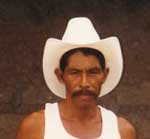Democratic Consolidation in Nicaragua 1979-2003
 This paper looks at the growth and strengthening of democracy in Nicaragua from the Sandinista revolution until 2003, taking into account the threat posed by the pacto and a popular waning of enthusiasm for democracy in the nation.
This paper looks at the growth and strengthening of democracy in Nicaragua from the Sandinista revolution until 2003, taking into account the threat posed by the pacto and a popular waning of enthusiasm for democracy in the nation.
You can read it in PDF format here.
In 1979, the Central American nation of Nicaragua, seething with political and economic discontent under an unjust and heavy-handed dictatorship slipped the reigns of autocracy and proceeded through two decades of political and economic growth that included aspects of Marxism, Leninism, Liberation theology, free market reforms, and democracy. It was one of several nations that made up the aptly named “Third Wave” of democratization, which in the late 20th century swept through significant areas of Southern, Central, and Eastern Europe, Latin America, and South and Southeast Asia, causing the number of governments classified as “democracies” to nearly triple. In Central America, Nicaragua was nearly unique in making this perilous and dangerous transition.
Trackbacks
The author does not allow comments to this entry

Comments
Display comments as Linear | Threaded